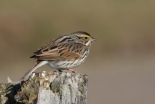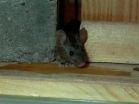(Press-News.org) The GOES-13 satellite captured a triple-header in the tropics today when it captured three tropical cyclones in one image in the Northern Hemisphere.
A visible image taken from the GOES-13 satellite on July 20 at 14:45 UTC (10:45 a.m. EDT) and shows a consolidating low pressure area called System 99L in the eastern North Atlantic Ocean, Tropical Storm Bret several hundred miles east of South Carolina, and a large Hurricane Dora off the west coast of Mexico. The image was created by the NASA/NOAA GOES Project at NASA's Goddard Space Flight Center in Greenbelt, Md.
System 99L is a low pressure area that may to reach tropical depression status in the next day or two. It is located about 550 miles east-northeast of Bermuda and is moving to the northeast at 20 mph.
At 2 p.m. EDT on July 20, satellite imagery showed that showers and thunderstorms have become better organized within System 99L. The low-level circulation is also becoming better defined and the storm appears primed to become a tropical depression. If that happens, it would be Tropical Depression 3 (TD3) in the Atlantic Ocean basin. The National Hurricane Center gives it a 90 percent chance of coming together as TD3 in the next 48 hours.
INFORMATION:
NASA's Hurricane page: www.nasa.gov/hurricane, also on Facebook and Twitter
GOES satellite sees a triple header in the tropics
System 99L looks ripe for development in the Atlantic
2011-07-22
ELSE PRESS RELEASES FROM THIS DATE:
It's no sweat for salt marsh sparrows to beat the heat if they have a larger bill
2011-07-22
Birds use their bills largely to forage and eat, and these behaviors strongly influence the shape and size of a bird's bill. But the bill can play an important role in regulating the bird's body temperature by acting as a radiator for excess heat. A team of scientists have found that because of this, high summer temperatures have been a strong influence in determining bill size in some birds, particularly species of sparrows that favor salt marshes. The team's findings are published in the scientific journal Ecography, July 20.
Scientists at the Smithsonian Migratory ...
Unlisted ingredients in teas and herbal brews revealed in DNA tests by high school students
2011-07-22
Take a second look at your iced or steaming tea. Guided by scientific experts, three New York City high school students using tabletop DNA technologies found several herbal brews and a few brands of tea contain ingredients unlisted on the manufacturers' package.
The teen sleuths also demonstrated new-to-science genetic variation between broad-leaf teas from exported from India versus small-leaf teas exported from China.
Guided by DNA "barcoding" experts at The Rockefeller University, an ethno-botanist at Tufts University and a molecular botany expert at The New York ...
UCSF study highlights success of brain surgery for severe epilepsy
2011-07-22
Two-thirds of people with severe and otherwise untreatable epilepsy were completely cured of their frequent seizures after undergoing neurosurgery at the University of California, San Francisco Medical Center, according to a new study that examined 143 of these patients two years after their operations.
The new study not only shows the promise of this type of neurosurgery at treating severe epilepsy, it also highlights how research into brain imaging may help to further improve results for people who have such operations.
"Surgery can be a powerful way to stop this ...
Whole sequence variation map reveals insight into evolutionary studies of rhesus macaque
2011-07-22
July 20, 2011 – BGI (previously known as the Beijing Genomics Institute), the largest genomics organization in the world, and Kunming Institute of Zoology, Chinese Academy of Sciences, together published the whole sequence variation map of rhesus macaque (Macaca mulatta) in Genome Biology on July 6th, 2011 (http://genomebiology.com/2011/12/7/R63). The study provides available resources for evolutionary and biomedical research.
Rhesus macaque, also called the Rhesus monkey, is one of the best known species of old world monkeys. Human and Rhesus macaque share a most recent ...
Cedars-Sinai movement disorders expert on international task force for dystonia treatment
2011-07-22
LOS ANGELES (July 20, 2011) –Neurologist Michele Tagliati, MD, director of the Movement Disorders Program at Cedars-Sinai Medical Center, served on an elite international task force commissioned by the Movement Disorder Society to provide insights and guidance on deep brain stimulation for dystonia, an uncommon condition that causes sustained, sometimes crippling muscle contractions.
The resulting articles, describing the data reviewed and outlining the group's conclusions, recommendations and points to be addressed in future research, published online last month in ...
Computer simulations aid understanding of bacterial resistance against commonly used antibiotics
2011-07-22
A recent study into the interactions between aminoglycoside antibiotics and their target site in bacteria used computer simulations to elucidate this mechanism and thereby suggest drug modifications.
In the article, which will be published on July 21st in the open-access journal PLoS Computational Biology, researchers from University of Warsaw, Poland, and University of California San Diego, USA, describe their study of the physical basis of one bacterial resistance mechanism - mutations of the antibiotic target site, namely RNA of the bacterial ribosome. They performed ...
Chromosome number changes in yeast
2011-07-22
Researchers from Trinity College Dublin have uncovered the evolutionary mechanisms that have caused increases or decreases in the numbers of chromosomes in a group of yeast species during the last 100-150 million years. The study, to be published on July 21st in the open-access journal PLoS Genetics, offers an unprecedented view of chromosome complement (chromosome number) changes in a large group of related species.
A few specific cases of chromosome number changes have been studied in plants and animals, for example the fusion of two great ape chromosomes that gave ...
'Freaky mouse' defeats common poison
2011-07-22
HOUSTON -- (July 21, 2011) -- Over millennia, mice have thrived despite humanity's efforts to keep them at bay. A Rice University scientist argues some mice have found two ways to achieve a single goal -- resistance to common poison.
New research by Michael Kohn and colleagues, reported today in the online journal Current Biology, analyzes a genetic mutation that has given the ordinary European house mouse this extraordinary ability.
The gene in question, vkorc1, is present in all mammals and manages vitamin K. A mutation to vkorc1 makes mice resistant to warfarin, ...
Skin sentry cells promote distinct immune responses
2011-07-22
A new study reveals that just as different soldiers in the field have different jobs, subsets of a type of immune cell that polices the barriers of the body can promote unique and opposite immune responses against the same type of infection. The research, published online on July 21st by Cell Press in the journal Immunity, enhances our understanding of the early stages of the immune response and may have important implications for vaccinations and treatment of autoimmune diseases.
Dendritic cells serve as sentries of the immune system and are stationed at the body's ...
As agricultural riches waylay pollinators, an endangered tree suffers
2011-07-22
For the conservation of species, hostile territory might sometimes have its advantages. That's according to a study of pollen flow among trees found only in remnant patches of native Chilean forest. The data show that the pollinators those rare trees rely on can be waylaid by the abundance of resources found in agricultural lands. As a result, trees growing in native forest patches are more likely to mate successfully when separated by resource-poor pine plantations than by those more attractive farmlands.
The finding reported in the July 21st Current Biology, a Cell ...
LAST 30 PRESS RELEASES:
Scientists use ultrasound to soften and treat cancer tumors without damaging healthy tissue
Community swimming program for Black youth boosts skills, sense of belonging, study finds
Specific depressive symptoms in midlife linked to increased dementia risk
An ‘illuminating’ design sheds light on cholesterol
Who is more likely to get long COVID?
Study showcases resilience and rapid growth of “living rocks”
Naval Research Lab diver earns Office of Naval Research 2025 Sailor of the Year
New Mayo-led study establishes practical definition for rapidly progressive dementia
Fossil fuel industry’s “climate false solutions” reinforce its power and aggravate environmental injustice
Researchers reveal bias in a widely used measure of algorithm performance
Alcohol causes cancer. A study from IOCB Prague confirms damage to DNA and shows how cells defend against it
Hidden viruses in wastewater treatment may shape public health risks, study finds
Unlock the power of nature: how biomass can transform climate mitigation
Biochar reshapes hidden soil microbes that capture carbon dioxide in farmland
Reducing saturated fat intake shows mortality benefit, but only in high-risk individuals
Manta rays create mobile ecosystems, study finds
Study: Mixed results in using lipoic acid to treat progressive multiple sclerosis
Norbert Holtkamp appointed director of Fermi National Accelerator Laboratory
New agentic AI platform accelerates advanced optics design
Biologists discover neurons use physical signals — not electricity — to stabilize communication
Researchers discover that a hormone can access the brain by hitchhiking
University of Oklahoma researcher awarded funding to pursue AI-powered material design
Exploring how the visual system recovers following injury
Support for parents with infants at pediatric check-ups leads to better reading and math skills in elementary school
Kids’ behavioral health is a growing share of family health costs
Day & night: Cancer disrupts the brain’s natural rhythm
COVID-19 vaccination significantly reduces risk to pregnant women and baby
The role of vaccination in maternal and perinatal outcomes associated with COVID-19 in pregnancy
Mayo Clinic smartwatch system helps parents shorten and defuse children's severe tantrums early
Behavioral health spending spikes to 40% of all children’s health expenditures, nearly doubling in a decade
[Press-News.org] GOES satellite sees a triple header in the tropicsSystem 99L looks ripe for development in the Atlantic



